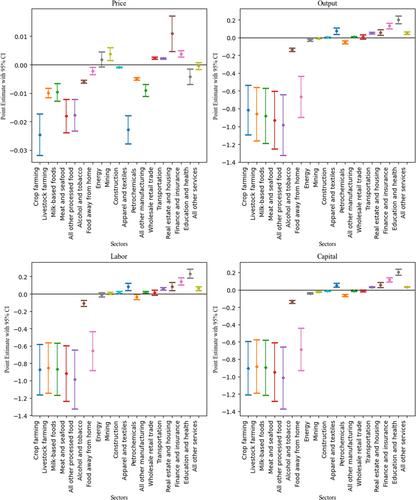Economywide impacts of the Supplemental Nutrition Assistance Program
Journal of the Agricultural and Applied Economics Association
Pub Date : 2024-03-04
DOI:10.1002/jaa2.115
引用次数: 0
Abstract
Most Supplemental Nutrition Assistance Program (SNAP) research focuses on individuals who receive SNAP without examining the effects on the broader economy. We develop a general equilibrium model of the US economy to quantify SNAP's broader fiscal consequences. We find that SNAP expands the agricultural and food sectors by about 1% while slightly shrinking service sectors favored by higher income households. Effects on goods and factor prices are modest, with virtually no deadweight losses associated with the taxation needed to fund SNAP. SNAP improves the welfare of low-income recipient households by 4.9%, while having a negligible adverse effect on high-income households.

补充营养援助计划对整个经济的影响
大多数 "补充营养援助计划"(SNAP)研究都集中在接受 SNAP 援助的个人身上,而没有研究其对更广泛经济的影响。我们建立了一个美国经济的一般均衡模型,以量化 SNAP 对更广泛的财政影响。我们发现,SNAP 使农业和食品行业扩大了约 1%,同时略微缩小了高收入家庭青睐的服务行业。对商品和生产要素价格的影响不大,为资助 SNAP 所需的税收几乎不会造成任何自重损失。SNAP 使低收入受援家庭的福利提高了 4.9%,同时对高收入家庭的不利影响微乎其微。
本文章由计算机程序翻译,如有差异,请以英文原文为准。
求助全文
约1分钟内获得全文
求助全文

 求助内容:
求助内容: 应助结果提醒方式:
应助结果提醒方式:


